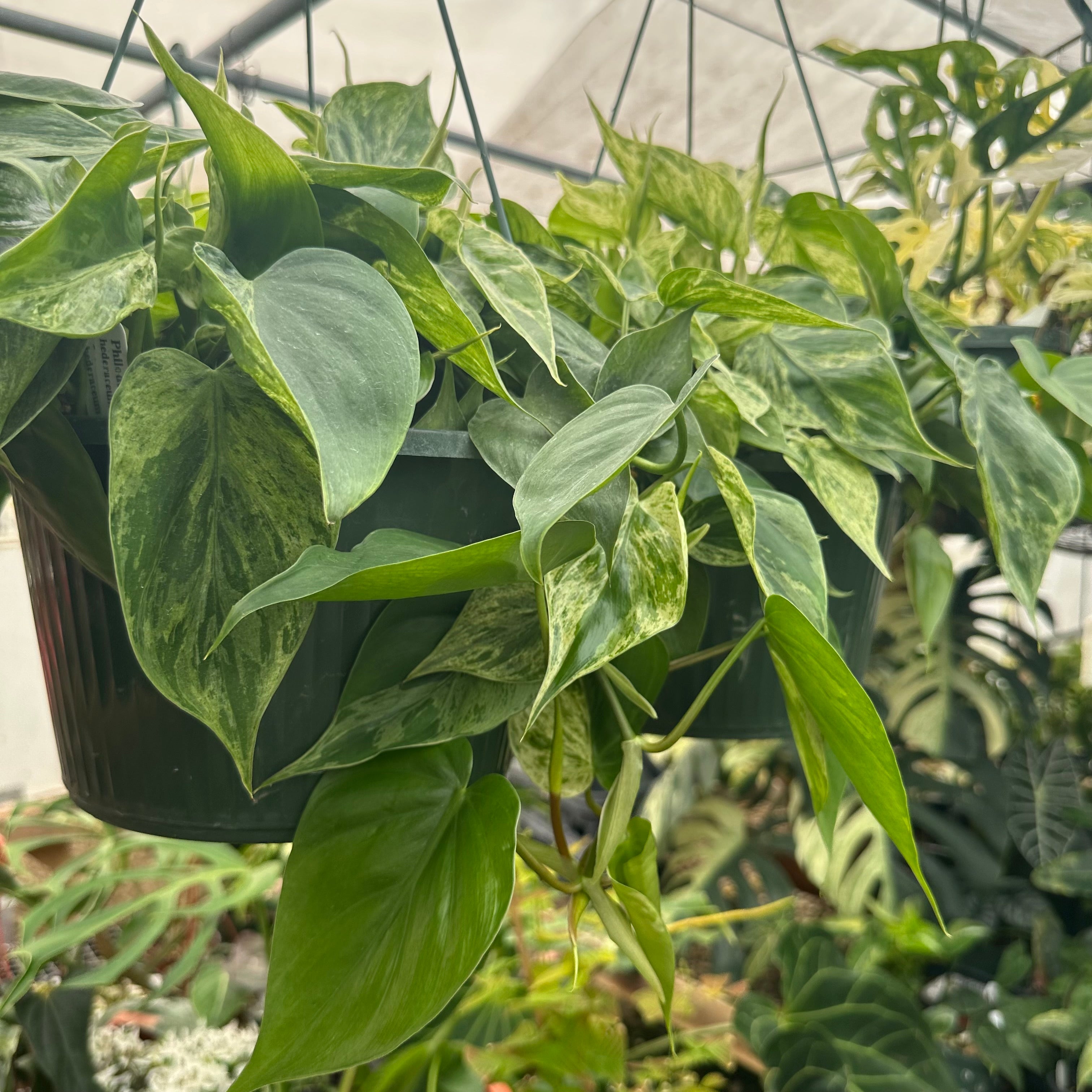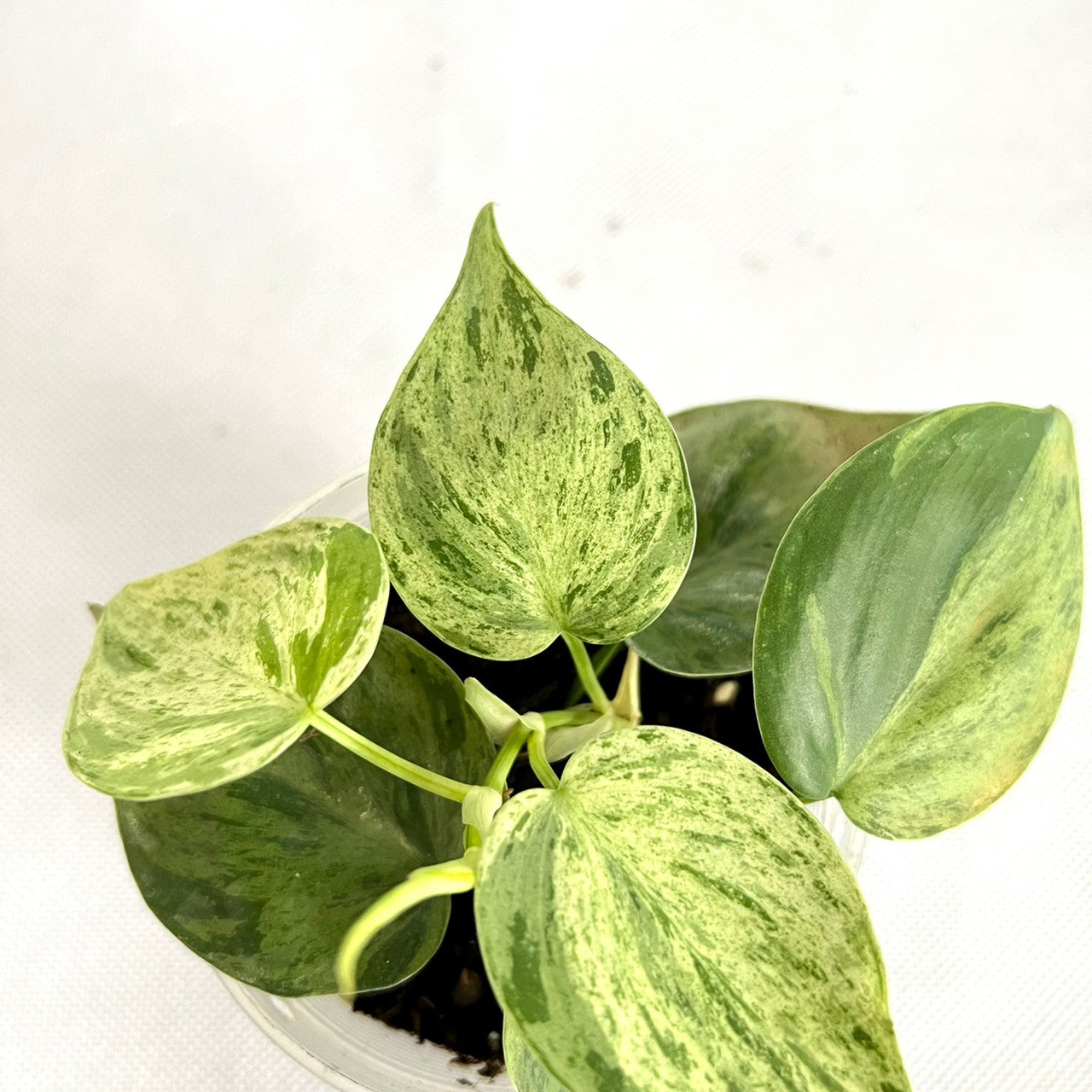Absolutely! Here’s a 3000-word article about Philodendron Variegata, formatted with `
` and `
` tags instead of “.
Philodendron Variegata, a botanical marvel that has captured the hearts of plant enthusiasts worldwide, is more than just a houseplant; it’s a living work of art. Its captivating variegated leaves, each a unique masterpiece of green and creamy white, bring a touch of tropical elegance to any space. This article delves into the fascinating world of Philodendron Variegata, exploring its varieties, care, propagation, and the reasons behind its enduring popularity.

Philodendrons, a genus of flowering plants in the Araceae family, are known for their adaptability and lush foliage. Variegation, a natural phenomenon that results in the loss of chlorophyll in certain plant tissues, creates the striking patterns that make Philodendron Variegata so desirable. This lack of chlorophyll manifests as white, cream, or yellow patches on the leaves, contrasting beautifully with the plant’s natural green.
The world of Philodendron Variegata is diverse and constantly evolving, with new cultivars emerging regularly. Here are some of the most popular and sought-after varieties:
Philodendron ‘Birkin’ Variegata
This variety is known for its striking pin-stripe variegation, with creamy white lines running along the veins of its dark green leaves.
Philodendron ‘White Princess’

‘White Princess’ is highly prized for its bold white variegation, which can cover significant portions of its leaves.
Philodendron ‘White Wizard’
Similar to ‘White Princess,’ ‘White Wizard’ boasts stunning white variegation, but its leaves tend to be rounder and more heart-shaped.
Philodendron ‘Florida Beauty’ Variegata
‘Florida Beauty’ is known for its deeply lobed leaves and unique, irregular variegation.
Philodendron ‘Paraiso Verde’ Variegata
This plant showcases beautiful, elongated lobes and a beautiful variety of green and light yellow variegation.
Philodendron ‘Jose Buono’ Variegata
This variety showcases large, elongated leaves with a very interesting marbled variegation.
While Philodendron Variegata is generally considered easy to care for, its unique characteristics require specific attention to ensure its health and vibrancy.
Light Requirements
Bright, indirect light is essential for maintaining the variegation. Direct sunlight can scorch the leaves, while insufficient light can cause the variegation to fade.
Watering
Allow the top inch or two of soil to dry out before watering.
Humidity
Philodendrons thrive in high humidity, mimicking their natural tropical environment.
Temperature
Maintain a temperature range of 65-80°F (18-27°C).
Soil and Fertilizing
Use a well-draining potting mix, such as a blend of peat moss, perlite, and orchid bark.
Propagating Philodendron Variegata allows you to expand your collection or share these beautiful plants with friends and family.
Stem Cuttings
The most common method of propagation is through stem cuttings.
Air Layering
Air layering is another effective method, particularly for larger plants.
Division
For plants with multiple stems growing from the base, division is also an option.
Like any plant, Philodendron Variegata can encounter problems. Here are some common issues and their solutions:
Yellowing Leaves
Overwatering, underwatering, or insufficient light can cause yellowing leaves.
Brown Leaf Tips
Low humidity, dry soil, or excessive fertilizer can lead to brown leaf tips.
Pest Infestations
Philodendrons can be susceptible to pests like spider mites, mealybugs, and aphids.
Loss of Variegation
Insufficient light is the most common reason for loss of variegation.
The popularity of Philodendron Variegata stems from its unique beauty and relatively easy care. Its variegated leaves add a touch of sophistication to any indoor space, making it a favorite among interior designers and plant enthusiasts alike. The rarity of some varieties adds to their allure, making them highly sought-after collector’s items.
Philodendron Variegata is a captivating plant that brings a touch of tropical elegance to any home. Its diverse varieties, each with its unique variegation patterns, offer something for every plant lover. By providing the right care and attention, you can enjoy the beauty of these stunning plants for years to come. Whether you’re a seasoned plant collector or a beginner, Philodendron Variegata is a worthy addition to your indoor garden. Its beauty and resilience make it a true botanical treasure.

